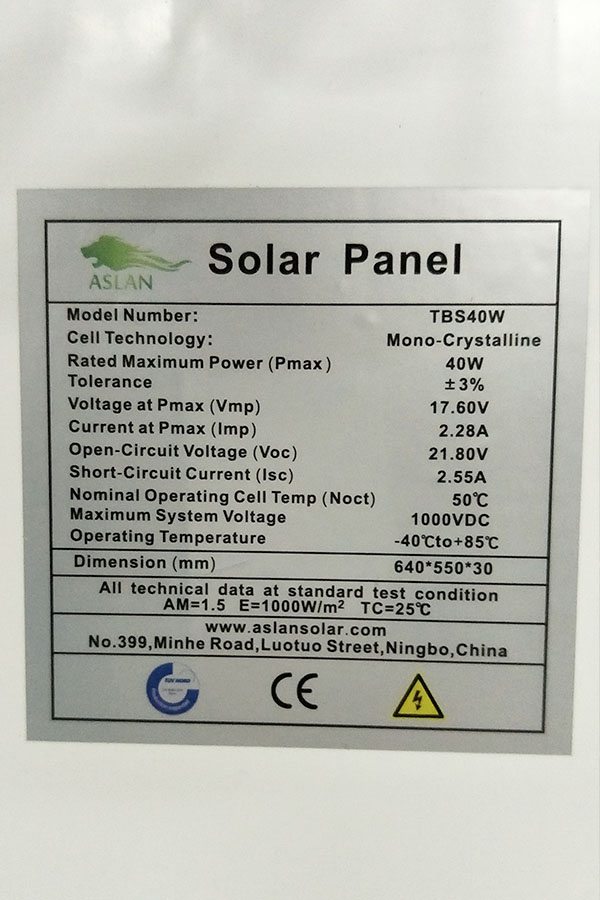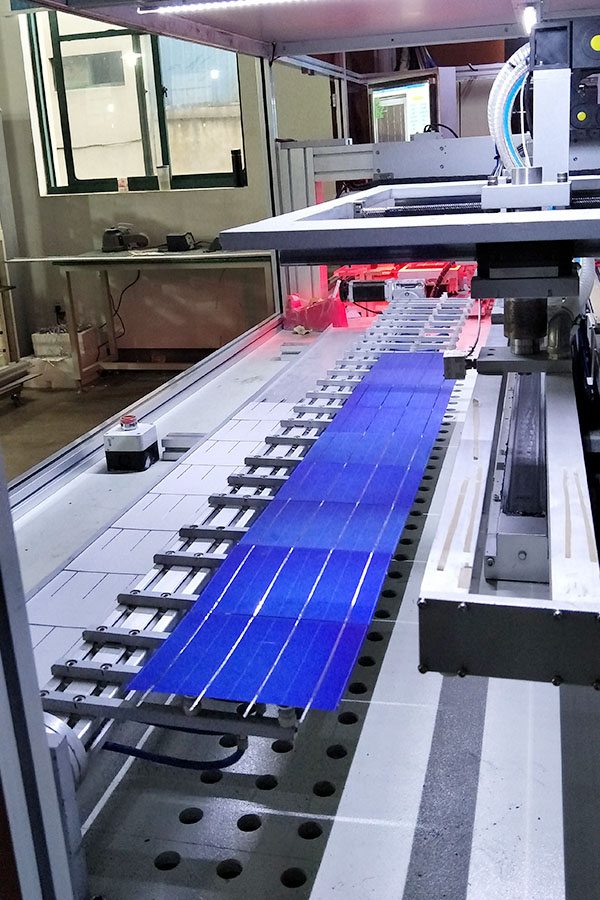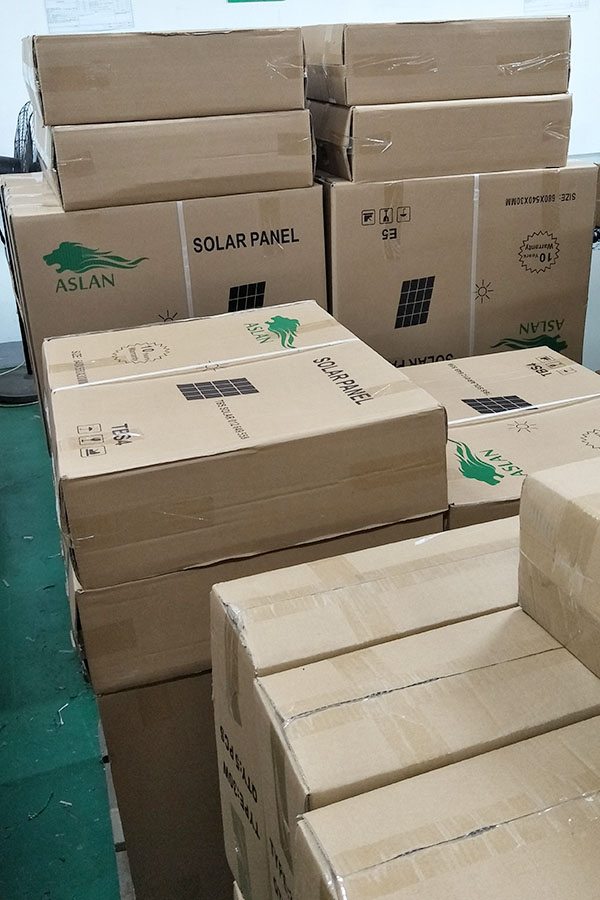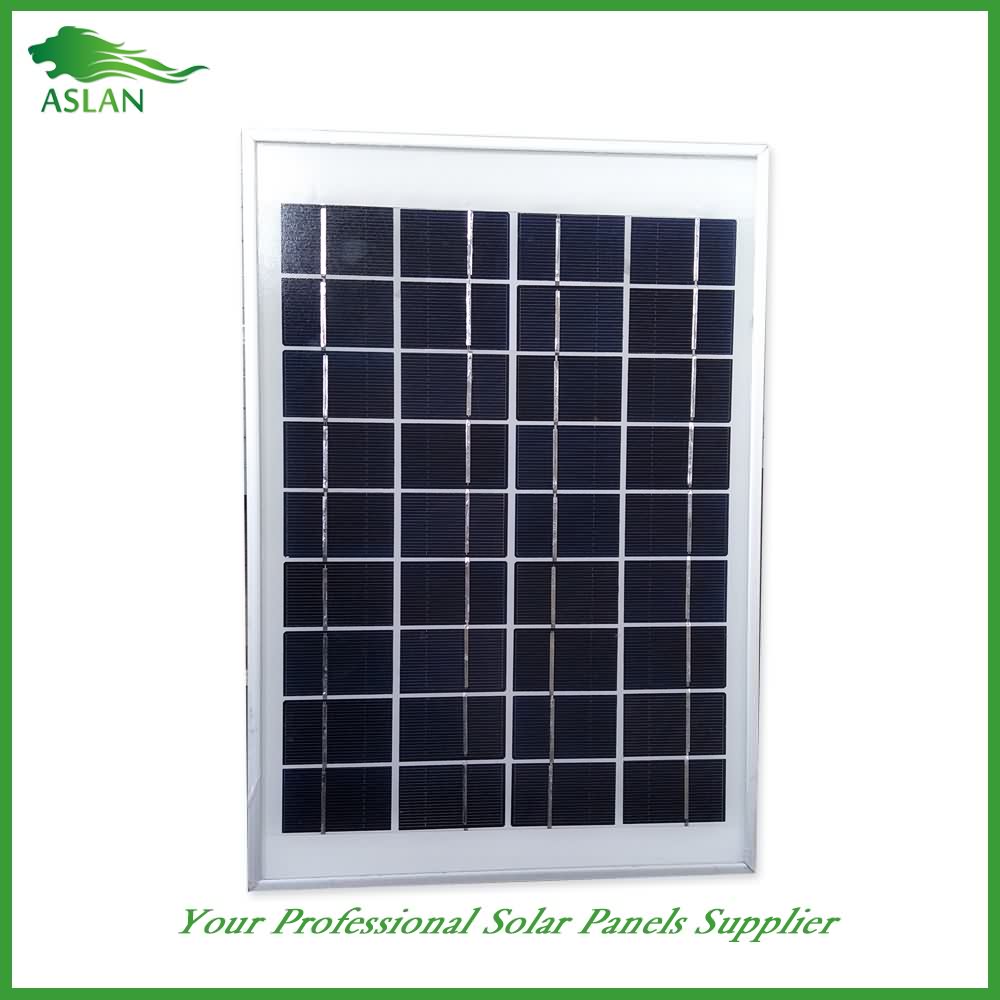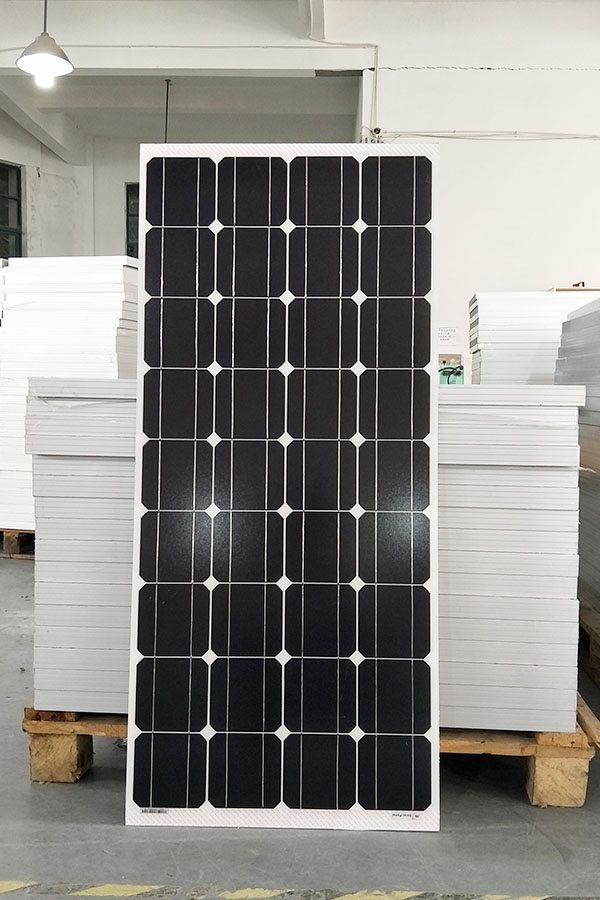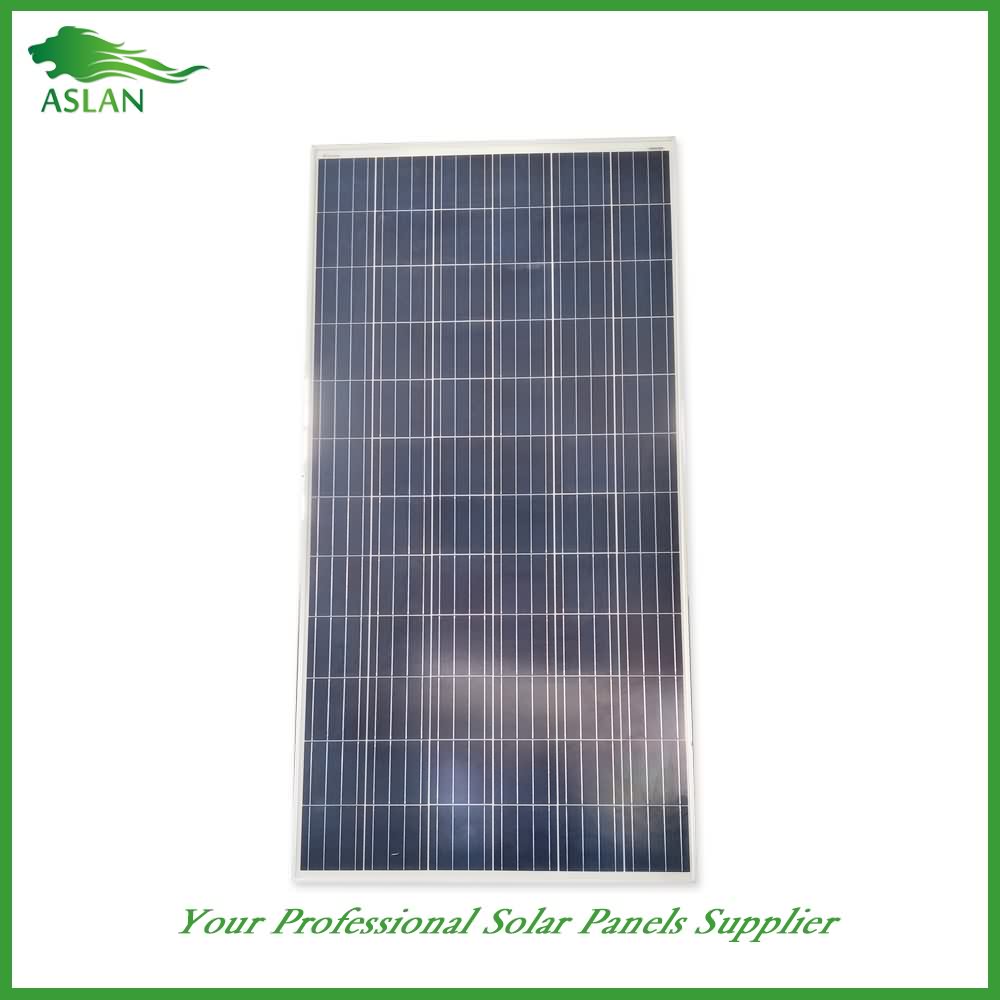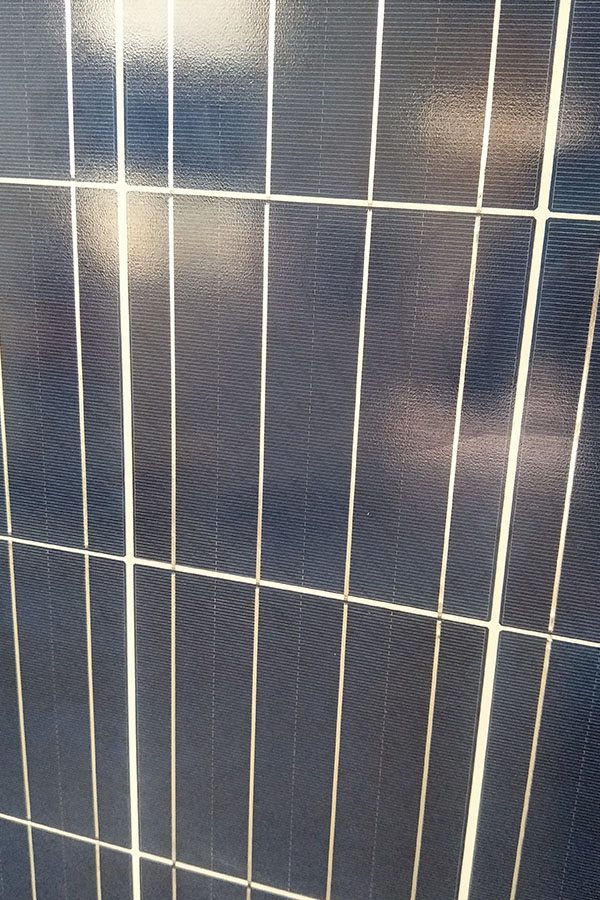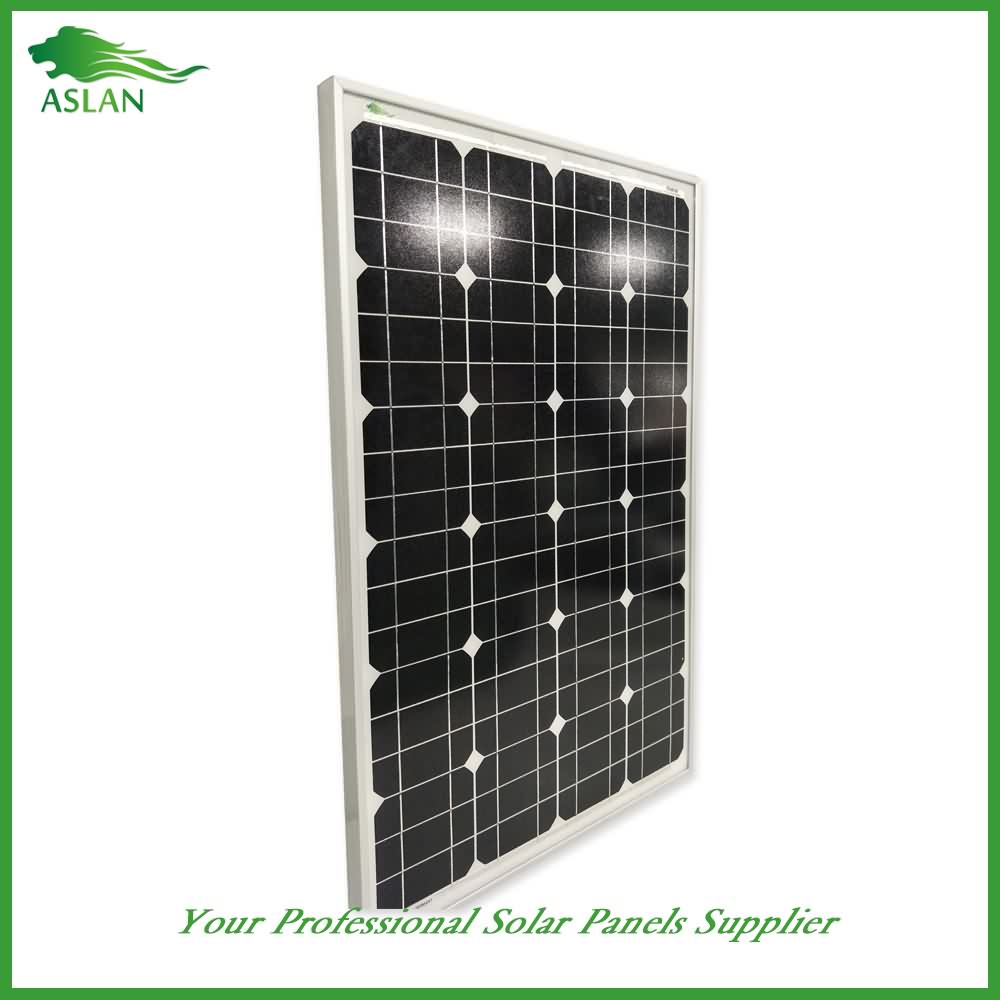Hot-selling attractive price Poly-crystalline Solar Panel 100W for UK Factory
Short Description:
"Quality first, Honesty as base, Sincere service and mutual profit" is our idea, in order to develop continuously and pursue the excellence for Hot-selling attractive price Poly-crystalline Solar Panel 100W for UK Factory, Our company will continue to adhere to the " superior quality, reputable, the user first " principle wholeheartedly. We warmly welcome friends from all walks of life to visit and give guidance, work together and create a brilliant future!
Technical parameter
Maximum Power(W) 100W
Optimum Power Voltage(Vmp) 17.87V
Optimum Operating Current(Imp) 5.60A
Open Circuit Voltage(Voc) 21.45V
Short Circuit Current(Isc) 6.17A
Mechanical Characteristics
Cell Type Polycrystalline 156x104mm (6 inch)
No of Cell 36 (4x9pcs)
Dimensions 1120x678x35mm
Weight 9.7KGS
Front Glass 3.2mm,High Transmission, Low Iron,Tempered Glass
Junction box IP65 Rated
Output Cable TUV 1×4.0mm2/UL12AWG,Length:900mm
Temperature and Coefficients
Operating Temperature(°C): -40°C ~ + 85°C
Maximum System Voltage: 600V(UL)/1000V(IEC) DC
Maximum Rated Current Series: 15A
Temperature Coefficients of Pmax: -0.435%
Temperature Coefficients of Voc: -0.35%
Temperature Coefficients of Isc: 0.043%
Nominal Operationg Cell Temperature (NOCT): 47+/-2°C
Materials of solar panel
1).Solar Cell——Polycrystalline solar cell 156*52mm
2).Front Glass——-3.2mm, high transmission, low iron, tempered glass
3).EVA——-excellent anti-aging EVA
4).TPT——-TPT hot seal made of flame resistance
5).Frame——anodized aluminum profile
6).Junction Box——-IP65 rated, high quality, with diode protection
Superiority: high quality anodized aluminum frame, high efficiency long life, easy installation, strong wind resistance, strong hail resistance.
Features
1. High cell efficiency with quality silicon materials for long term output stability
2. Strictly quality control ensure the stability and reliability, totally 23 QC procedures
3. High transmittance low iron tempered glass with enhanced stiffness and impact resistance
4. Both Poly-crystalline and Mono-crystalline
5. Excellent performance in harsh weather
6. Outstanding electrical performance under high temperature and low irradiance
Quality assurance testing
Thermal cycling test
Thermal shock test
Thermal/Freezing and high humidity cycling test
Electrical isolation test
Hail impact test
Mechanical, wind and twist loading test
Salt mist test
Light and water-exposure test
Moist carbon dioxide/sulphur dioxide
When humans finally travel into space, where will we live? Will we ever be able to colonize gas giants like Jupiter?
Support us at: http://www.patreon.com/universetoday
More stories at: http://www.universetoday.com/
Follow us on Twitter: @universetoday
Follow us on Tumblr: http://universetoday.tumblr.com/
Like us on Facebook: https://www.facebook.com/universetoday
Google+ – https://plus.google.com/+universetoday/
Instagram – http://instagram.com/universetoday
Team: Fraser Cain – @fcain
Jason Harmer – @jasoncharmer
Susie Murph – @susiemmurph
Brian Koberlein – @briankoberlein
Chad Weber – [email protected]
Kevin Gill – @kevinmgill
Created by: Fraser Cain and Jason Harmer
Edited by: Chad Weber
Music: Left Spine Down – “X-Ray”
NASA and Elon Musk have plans to get your ass to Mars.
It’s not impossible to imagine humans living and working on the Red Planet. Maybe they’ll be crusty asteroid miners making their fortune digging precious minerals out of the inexhaustible supply of space rocks. Pray they don’t dig too deeply. We should go ask Kuato, that creepy little guy knows everything! Except he’s always trying to get you to touch his funny little hands. Pass.
Venus looks like it’s a pretty great place to live, if we stick to the clouds in floating sky cities, plying the jet streams in our steampunk dirigibles. It’ll be fun, but first, does anyone know how to attach a cog to a top hat? Venus, here we come!
We should stay away from the surface, though, that place’ll kill you dead. We’re guessing a crispy shell holding in a gooey center, at least for the first few moments. Once we sort the living in space deal, is there anywhere we won’t be able to go?
We could create underwater cities on Europa or Ganymede, in the vast oceans with the exotic hopefully unarmed, peaceful, vegetarian Jovian whales.Like Jupiter? Could we live there?
Jupiter is the most massive planet in the Solar System. It has a diameter of almost 140,000 kilometers and it’s made mostly of hydrogen and helium; the same materials of the Sun. It has more than 317 times the mass of the Earth, providing its enormous gravity.
If you could stand on the cloud tops of Jupiter, you would experience 2.5 times the gravity that you experience on Earth. Then you’d fall to your death, because it’s a gas planet, made of hydrogen, the lightest element in the Universe. You can’t stand on gas, rookie.
If you tried to bring your Venusian Vernian exploratorium ballooncraft for a jaunt across the skies of Jupiter, it would sink like a copper bowler with lead goggles.
The only thing that’s lighter than hydrogen is hot hydrogen. Let’s say you could make a balloon, and fill it with superheated hydrogen and float around the cloud tops of Jupiter suffering the crushing gravity. Is there anything else that might kill you?
Did you leave Earth? Then of course there is. Everything is going to kill you, always. You might want to write that on the brass plaque next to your ship’s wheel with the carving of Shiva in the center there, Captain Baron Cogsworth Copperglass.
Jupiter is surrounded by an enormous magnetic field, ten times more powerful than Earth’s. It traps particles and then whips them around like an accelerator. This radiation is a million times more powerful than the Earth’s Van Allen belts. Our big human meat roasting concern during the Apollo days.
If you tried to get near the radiation belts without insufficient shielding. It’d be bad. Just picture jamming your copper and brass steamwork fantasy into a giant microwave.
Is it possible there’s a solid core, deep down within Jupiter? Somewhere we could live, and not have to worry about those pesky buoyancy problems? Probably. Astronomers think there are a few times the mass of the Earth in rocky material deep down inside.
Of course, the pressure and temperature are incomprehensible. The temperature at the core of Jupiter is thought to be 24,000 degrees Celsius. Hydrogen is crushed so tightly it becomes superheated liquid or strange new flavors of ice. It becomes a metal.
The moral, we’re not equipped to go there. Let alone set up shop. So, let’s just stick with fantasizing your adventures as Emperor Esquire Beardweirdy Brassnozzle Steamypantaloons.
In his classic book 2001, Arthur C. Clarke said that “all these worlds are yours except Europa, attempt no landing there”. Well that’s crazy.
Europa’s awesome, we’re totally landing there, especially if we discover alien whales. So, Europa first. Besides, it’s just a book. So, Jupiter is the worst. Do not navigate your airship into that harbour.
This video is the chronicling of the making of a small solar powered portable USB charger for charging cameras, mp3 players, ipods, blackberry, or any other mobile device that will charge from a usb port.
The power storage on this device is achieved through the use of a clearance $7 radio shack camcorder battery. The battery is 6 volts and 2700mah.
The battery is charged via a 12v solar panel connected directly to the battery with no regulation. I decided not to use any regulation from the solar panel to the battery because the panel I use is (at a maximum) 125mah, approximately 4-5% of the capacity of the battery.
Although the battery may be at risk for slightly overcharging, it’s highly unlikely that it will actually do much damage since a float charger would probably give around 5% anyway. Combined with the fact that it will be a slow charge (roughly 32.4 hours of daylight) instead of using fast charging commercial methods, I’ll probably see more life out of this battery than if I charge it with an actual charger.
A single pole double throw switch is used to switch between the charging terminals and the power for the USB device. I did this primarily because the voltage regulator I use to regulate the power to the USB port has a 2mah draw on standby. Given that this device needs to be as efficient as possible, I chose to have a switch so the voltage regulator would not be on while the battery is charging.
The voltage regulator used is a 5 volt low dropout regulator, which drops maybe .7 volts at most, which is perfect considering the battery is giving roughly 5.85 volts out of the box without an initial charge (the cells need to be broken in).
I have a 16v 470uF capacitor connected in parallel with the output of the regulator, and a 10k resistor connected from pins 2 and 3 to the positive voltage pin (output from the regulator).
My blackberry’s battery is 1100mah, so I should be able to get 2 full charges from a COMPLETELY dead battery and still have a little juice left over on one battery charge. Given 8 hours of good sunlight, the battery on the USB charging device should charge in approximately 4 days.
So this is not a permanent use supply, but at least 2 full charges per week can be a great emergency charging device when your out of reach from your charger or other power source. I’m thinking long bike rides, camping, beach, etc,…
Feel free to suggest improvements, as I’m always looking to better the devices I make. Also, feel free to ask questions; however, I’m not extremely knowledgeable in the subject.
Special thanks to Kevin MacLeod at incompetech.com for the music. His song “harmful or fatal” is Licensed under Creative Commons “Attribution 3.0″ http://creativecommons.org/licenses/by/3.0/


